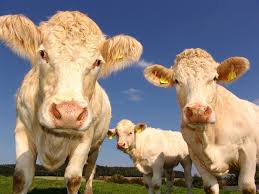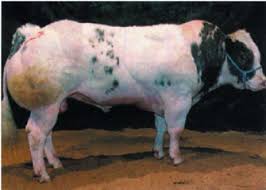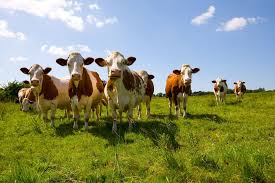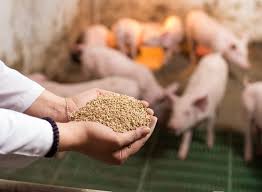Genetic modification (GM) in animal breeding represents a significant advancement in agricultural science, offering new ways to enhance animal traits and improve productivity. Traditionally, animal breeding relied on selective breeding, where individuals with desirable traits were chosen to produce the next generation.
However, selective breeding often took years or even decades to yield significant improvements, and the process was limited by the genetic material available within a species.
With the advent of genetic modification, scientists can now directly alter the DNA of animals, allowing for precise changes to specific genes.
This technology not only accelerates the breeding process but also enables the introduction of traits that may not naturally occur within a species.
Genetic modification involves manipulating the genetic code to influence certain characteristics, such as growth rate, disease resistance, and milk or meat quality.
Techniques like CRISPR-Cas9 and other gene-editing tools allow scientists to add, delete, or modify genes, giving them unprecedented control over the traits passed on to future generations.
For example, gene editing has been used to create pigs resistant to certain viral infections and cows that produce more nutritious milk.
These advancements have the potential to improve animal welfare, reduce resource consumption, and increase food security.
Despite its advantages, genetic modification in animal breeding raises ethical and environmental concerns. Critics argue that altering an animal’s genetic makeup may lead to unintended consequences, affecting ecosystems and biodiversity.
Additionally, there are concerns about animal welfare, as some modifications could impact animals’ health and behavior.
However, proponents believe that with responsible use and stringent regulatory oversight, genetic modification can contribute positively to agriculture, helping to meet the growing global demand for food and other animal-based products.
As research progresses, understanding and addressing these concerns will be crucial for the responsible advancement of genetic modification in animal breeding.
Importance of Genetic Modification in Animal Breeding

Genetic modification in animal breeding has become essential for addressing some of the most pressing challenges in agriculture. With the global population steadily increasing, there is a rising demand for animal products such as meat, milk, and eggs.
Genetic modification enables scientists to enhance specific traits in animals, such as growth rate, disease resistance, and feed efficiency, to produce more resilient and productive livestock.
Genetic modification can improve the nutritional quality of animal products, allowing for healthier food options.
It also has potential benefits for the environment, as modified animals often require fewer resources, such as feed and water, which can lead to reduced greenhouse gas emissions and less strain on natural resources.
Key Principles of Genetic Modification
The process of genetic modification in animal breeding is guided by several core principles:
1. Precision: Genetic modification focuses on targeted changes within an animal’s DNA, allowing for precise adjustments to specific genes. This precision helps reduce the risk of unwanted side effects compared to traditional breeding methods, which can sometimes produce unpredictable results.
2. Efficiency: Genetic modification allows for faster improvements in animal traits, accelerating the breeding process. Instead of relying on generations of selective breeding, scientists can achieve desired traits within a shorter timeframe, making this approach more efficient and responsive to current agricultural needs.
3. Sustainability: A key principle in genetic modification is to improve the sustainability of animal production. By creating animals that require fewer resources, are more resilient to diseases, and produce less waste, genetic modification supports more environmentally friendly farming practices.
4. Ethics and Safety: Ethical considerations and safety are central to the practice of genetic modification. All modifications are tested rigorously to ensure they are safe for animals, humans, and the environment. Additionally, ethical standards guide research and application, prioritizing animal welfare and minimizing risks.
Overview of Animal Breeding Techniques
Animal breeding techniques aim to enhance desirable traits in animals, such as higher productivity, disease resistance, and better adaptation to environmental conditions. Traditional breeding methods, like selective breeding and crossbreeding, have been used for centuries to improve livestock by mating animals with desired characteristics.
With advancements in technology, modern techniques such as artificial insemination, embryo transfer, and genomic selection have become more common, allowing for more precise control over breeding outcomes.
Recently, genetic modification has emerged as a powerful tool in animal breeding, enabling scientists to directly alter the DNA of animals to introduce specific traits more accurately and efficiently.
Traditional vs. Genetic Modification Methods
1. Selective Breeding: Traditional methods, like selective breeding, involve choosing animals with desirable traits to reproduce, gradually enhancing these traits over generations. Although effective, this approach is time-consuming and limited by the genetic diversity present within a species.
2. Genetic Modification: In contrast, genetic modification allows for more precise and rapid changes. Techniques like CRISPR-Cas9 enable scientists to edit specific genes, which can produce desired traits in a single generation.
Genetic modification can introduce traits not naturally found in a species, such as disease resistance or enhanced nutritional content, which is difficult to achieve through traditional methods.
3. Comparison: Traditional methods rely on naturally occurring genetic variation and are often limited to traits within a species. Genetic modification, however, allows scientists to make targeted genetic changes, which can be cross-species and achieve results more quickly.
While traditional methods are generally viewed as safer and more accepted, genetic modification is subject to more stringent regulatory oversight due to potential ethical and environmental concerns.
Read Also: 10 Medicinal Health Benefits of Ficus religiosa (Sacred Fig)
Genetic Engineering in Animal Breeding

Genetic engineering represents the next step in animal breeding, allowing scientists to modify an animal’s genetic material with precision.
Techniques like gene editing involve adding, deleting, or altering DNA to enhance specific traits.
For instance, gene editing can create animals with better resistance to diseases, increased productivity, and improved nutritional qualities in products like milk and meat.
Other techniques, such as transgenics, involve inserting genes from one species into another, creating animals with entirely new capabilities, such as faster growth rates or enhanced resilience to environmental stressors.
The application of genetic engineering in animal breeding holds tremendous potential, but it also raises ethical and environmental concerns.
Ensuring responsible use of genetic engineering techniques and addressing potential risks is essential for the sustainable development of this field.
As research progresses, genetic engineering will likely play an increasingly significant role in helping to meet global food demands while promoting animal welfare and sustainability.
Role of Gene Editing Technologies
Gene editing technologies have transformed animal breeding by allowing scientists to make precise and targeted changes to an animal’s DNA.
These technologies enable the addition, deletion, or alteration of specific genes to produce desirable traits, such as disease resistance, faster growth, or improved nutritional content.
The precision and efficiency of gene editing offer several benefits over traditional breeding methods, including faster results and the ability to introduce traits that may not naturally exist within a species.
Gene editing holds immense potential for improving animal welfare, enhancing agricultural productivity, and creating more sustainable farming practices.
CRISPR-Cas9 in Animal Breeding
CRISPR-Cas9 is one of the most powerful and widely used gene editing tools in animal breeding. This technology utilizes a protein (Cas9) to cut DNA at specific locations, allowing scientists to add, remove, or modify genes with high accuracy.
In animal breeding, CRISPR-Cas9 has been used to produce animals with traits like enhanced growth rates, disease resistance, and improved meat quality.
For example, CRISPR has been employed to create pigs resistant to Porcine Reproductive and Respiratory Syndrome (PRRS), a costly disease affecting the swine industry. Due to its precision, CRISPR-Cas9 minimizes unintended genetic changes, making it a safer option for introducing beneficial traits into livestock populations.
Transgenic Animal Breeding Techniques
Transgenic animal breeding involves inserting genes from one species into the genome of another to introduce new traits. This process allows scientists to create animals with capabilities not possible through traditional breeding.
For example, transgenic techniques have been used to produce cows that are resistant to certain bacterial infections or salmon that grow faster than their wild counterparts.
By introducing foreign genes, transgenic animals can be tailored for specific purposes, such as producing therapeutic proteins in their milk or enhancing nutritional content.
However, transgenic animal breeding also raises ethical and ecological concerns, which require careful consideration and regulatory oversight.
Somatic Cell Nuclear Transfer (SCNT)
Somatic Cell Nuclear Transfer (SCNT) is a cloning technique in which the nucleus of a somatic (non-reproductive) cell is transferred into an egg cell whose nucleus has been removed.
This allows for the creation of a genetic copy of the original animal. SCNT is primarily used for cloning valuable livestock, such as animals with high-quality meat or milk production traits, or for preserving endangered species.
In animal breeding, SCNT can be combined with gene editing to produce cloned animals with specific genetic modifications.
While SCNT has significant potential in agriculture and conservation, it also presents challenges, such as low success rates and concerns about animal welfare, which must be carefully managed.
Read Also: 5 Medicinal Health Benefits of Scutellaria nana (Dwarf Skullcap)
Applications of Genetic Modification in Livestock Improvement

Genetic modification has vast applications in livestock improvement, enhancing various traits to meet the demands of modern agriculture. Here are a few key areas where genetic modification is making a difference:
1. Disease Resistance: By introducing or editing genes, scientists can create livestock with enhanced resistance to specific diseases. For example, genetically modified pigs have been developed to resist diseases like African Swine Fever and PRRS (Porcine Reproductive and Respiratory Syndrome), reducing the need for antibiotics and lowering mortality rates.
2. Enhanced Growth Rates: Genetic modification allows for faster growth and improved feed efficiency in animals. For example, genetically modified salmon have been engineered to grow nearly twice as fast as wild salmon, helping to meet the increasing demand for seafood while reducing environmental strain on wild fish populations.
3. Improved Product Quality: Genetic modification can enhance the nutritional content and quality of animal products. This includes modifying milk composition for increased protein or reduced lactose, or altering fat profiles in meat to produce healthier products. These modifications can lead to more nutritious foods and help farmers cater to specific consumer preferences.
4. Environmental Sustainability: Through genetic modification, livestock can be tailored to produce less waste or require fewer resources, such as water and feed. For example, cattle have been engineered to produce lower methane emissions, contributing to reduced greenhouse gas impacts from livestock farming.
5. Animal Welfare: Certain genetic modifications can improve animal welfare by reducing physical challenges or health issues. For instance, gene-editing techniques have been used to produce hornless dairy cattle, eliminating the need for dehorning, which can be a painful procedure.
Ethical Considerations in Animal Genetic Modification
Genetic modification in animals raises a number of ethical concerns that must be carefully considered:
1. Animal Welfare: One of the primary concerns is the potential impact on animal health and welfare. While genetic modification can bring benefits, it can also introduce unintended health risks or discomfort.
Modifications that alter the animal’s physical structure or metabolic rate may affect its quality of life. Ensuring that modified animals are not subjected to unnecessary suffering is a critical ethical responsibility.
2. Natural Integrity: Some critics argue that genetic modification disrupts the natural integrity of animals, crossing ethical boundaries by introducing traits that may not naturally occur.
This can include concerns about altering the animal’s identity or introducing foreign genes from other species, which some view as an unnatural interference with the animal’s genetic makeup.
3. Environmental Impact: The potential effects on biodiversity and ecosystems are another significant concern. For example, if genetically modified animals were to escape into the wild, they could potentially disrupt local ecosystems or interbreed with wild populations, causing unforeseen ecological changes.
Stringent controls are necessary to prevent environmental contamination and maintain ecological balance.
4. Food Safety and Public Health: Ensuring the safety of food products from genetically modified animals is a priority for many consumers. There are concerns about the long-term effects on human health and potential allergens or toxins in genetically modified food products.
Rigorous testing and transparent labeling help address these concerns, allowing consumers to make informed choices.
5. Socio-Economic Implications: Genetic modification can have broad impacts on farming communities and global markets. Some worry that the cost and control of genetic technologies may concentrate power among a few large corporations, impacting small-scale farmers and leading to economic inequality.
Ethical considerations include ensuring fair access to technology and preventing monopolistic control over food sources.
While genetic modification in animal breeding offers significant potential, addressing these ethical concerns through responsible research, regulation, and transparent communication is crucial to ensure its acceptance and safe application in agriculture.
Do you have any questions, suggestions, or contributions? If so, please feel free to use the comment box below to share your thoughts. We also encourage you to kindly share this information with others who might benefit from it. Since we can’t reach everyone at once, we truly appreciate your help in spreading the word. Thank you so much for your support and for sharing!
Read Also: Homeowners Insurance Complete Guide

